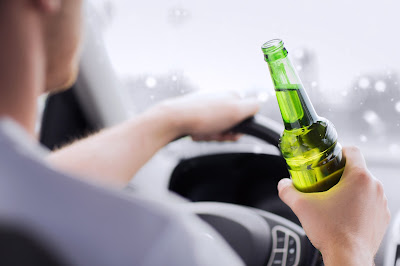Drink driving in UK versus Norway: when is a road not a road?
 |
| Kragero Golf Resort |
This post is part of a short series of blogs inspired by the
conviction of Halfords Finance Director, Jonny Mason, for drink driving in
Norway. In the last post, we looked at whether the golf buggy he was driving at
the time of his arrest could be a motor vehicle here in the UK. In this post,
we’ll consider how our law differs from Norway’s on the place of the offence.
Mr Mason was staying in a golf resort. According to the
press, he decided to drive a golf buggy from a bar to his holiday apartment. It
is said that at no time did he travel beyond 10KPH or 6MPH.
In the UK, drink driving is only a crime when committed in a
public place or on a road, but the legal definition of a road is much narrower
than you might imagine. If you drink drive in a private place or on a road that
does not meet the legal definition of a road then you will be not guilty, so it’s
important that you (and your solicitor) knows the difference.
To decide whether Mr Mason’s actions could have been a crime
here in the UK, we must ask ourselves whether the golf resort he was driving
through is a road or public place as the Road Traffic Act 1988 only applies to
those places and thus no offence is committed if you are not on a road or in a
public place.
What is a road? The Road Traffic Act tells us that a road
is, “any highway and any other road to
which the public has access and includes bridges over which a road passes”.
When I was a school child I was taught that it is wrong to define a word by
using the word itself; I think it’s fair to say that the MPs who gave us this
description went to a different school! In any event, we’re stuck with it so
we’ll carry on as best we can. Barrett v
DPP provided a much more helpful definition of a road when they said that
the defendant had, “followed a route
between points which was tarmacadam with defined edges, road marking and signs;
that the roadway was used by members of the public, including those who had no
other business within the caravan park, as a through route to the beach”.
Clarke v Kato, agreed
with Barrett and went on to tell us that each case will turn on the particular
character of the area in question and that a road should normally lead from one
place to another. This was followed in Brewer
v DPP where the car park did contain a route through it but only from the
public car park into a staff only car park and the court decided that was not
sufficient to make the car park a road for the purposes of drink driving law.
 |
| Roads are part tarmac part grass with no road signs visible |
In Alun Griffiths
(Contractors) Ltd v Driver and Vehicle Licensing Agency, the court also
considered whether the area in question was maintained at public expense and
found in that case that part of the reason the area was a road was because the
taxpayer paid to maintain it. That cannot be a definitive piece of evidence
though because the Act also says that the road must be one “to which the public
has access”. A road inside a military base may be maintained at public expense,
have a tarmac surface with defined edges, road marking and signs but if the
public do not have legal access to it then it is not a road for the purposes of
drink driving law.
Being the sort of sad chap I am with too much curiosity and
access to Google, I have taken a look at photographs of the golf resort in
question and studied the satellite images so am happy to say that there are some
narrow tarmac roads with defined edges, although not all roads meet this
description. There are no obvious road signs in the photographs. There appear to
be barriers preventing access to non-guests.
Therefore, in answering the question does the golf resort
contain roads that it would be illegal to drink and drive upon here in the UK,
we can give a confident answer of ‘no’. This is because, although much of it
appears to be made of tarmac with clear edges there are no road signs and there
is no route through the golf resort from one place to another. While we do not
know who maintains the road system, I would suggest that in the UK the local
authority would be unlikely to pay for the upkeep of a road network contained
wholly within a private golf resort. The presence of barriers also suggest that
the resorts roads are open only to a subset of the general public, i.e. people
working at or staying at the resort, and not to the public at large.
For the same reason, we can conclude that the resort is not
a public place because members of the public who are not resort guests or staff
have no right to enter or be on the land. It is thus a private place not a
public one.
We can therefore say that had Mr Mason driven his golf buggy
after drinking so much alcohol that the proportion of it in his breath was
above the drink driving limit here in the UK, he would not have been committing
a criminal offence and would have been found not guilty by the court.


Comments
Post a Comment